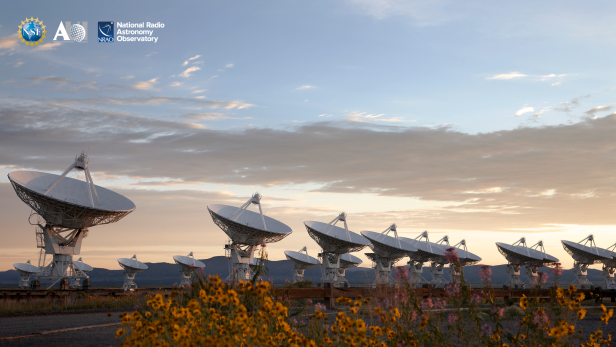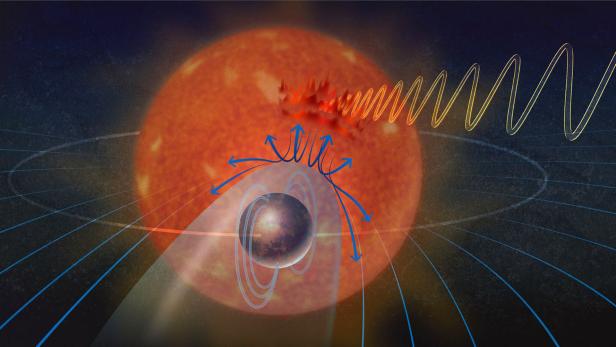The exoplanet YZ Ceti b emits a repetitive signal. Astronomers were able to do this with the help of the Very Large Array observe the telescope network. The researchers could thus have successfully used a method for the first time to detect magnetic fields on distant, small planets.
YZ Ceti b is about the size of Earth and is 12 light years away from us. The rocky planet is in a tight orbit around a red dwarf. In only 2 days completely orbits the central star. But another aspect is particularly interesting: the planet probably has one magnetic field.
Simulation of YZ Ceti b
© Exoplanet Exploration Program / JPL / NASA
A magnetic field is critical to a planet’s habitability. On Earth, it protects the vital the atmosphere before solar winds. Without a magnetic field, the atmosphere would gradually be eroded, like on Mars. The Red Planet no longer has a magnetic field and so does its atmosphere only 1.2 percent the density of the earth’s atmosphere.
Regular radio signal
The Researchers Sebastian Pineda and Jackie Villadsen use the telescope network in New Mexico to find out if YZ Ceti b has such a magnetic field. They also studied how it interacts with the central star, YZ Ceti.
During their observation, they then discovered the radio signal. “We saw the first rash and it was beautiful,” says Pineda in a statement. “When we saw it again, it became clear that we might really have discovered something.”
The Very Large Array (VLA) telescope network in New Mexico
© NRAO/AUI/NSF
The two researchers suspect that the radio signal originates from the interaction between YZ Ceti b and its star. However, the radio waves would have to be very strong to observe them over such a long distance.
Interaction with central star
Magnetic fields are invisible, so determining if a distant planet has one is a challenge. “We’re looking for planets that are very close to their stars and are similar in size to Earth,” says Villadsen.
Although the proximity would prevent life from being able to exist there, at the same time the planet is repressing it Plasma, which is thrown off the central star. If the star has a magnetic field and shields the plasma, it ensures that the star emits very bright radio waves, the researcher explains. The strength of the radio waves can be used to determine how strong the magnetic field of the exoplanet is.
The central star YZ Ceti emits radio waves created by the exoplanet’s magnetic field
© National Science Foundation/Alice Kitterman
Aurora on red dwarf
The researchers are also analyzing which ones weather conditions thereby could rule on the planet. On Earth, solar winds hitting the Earth’s magnetic field are for colorful polar lights responsible.
In the case of YZ Ceti b, auroras are also formed, according to the scientists. However, they are not on the planet, but the Aurora takes place on the star. “This is the radio signal that we receive,” says Pineda. If the exoplanet has its own atmosphere, it is likely that auroras will also form there.
open questions
Even if the research results are plausible, there are other ways in which the radio signals are generated. They are almost identical to the time it takes the planet to orbit the star. Therefore, they could also inclination of the magnetic field arise, as in the case of Jupiter. To confirm the theory, the team needs to conduct several follow-up surveys with additional radio telescopes. The current observations were published in the journal Nature Astronomy published.



